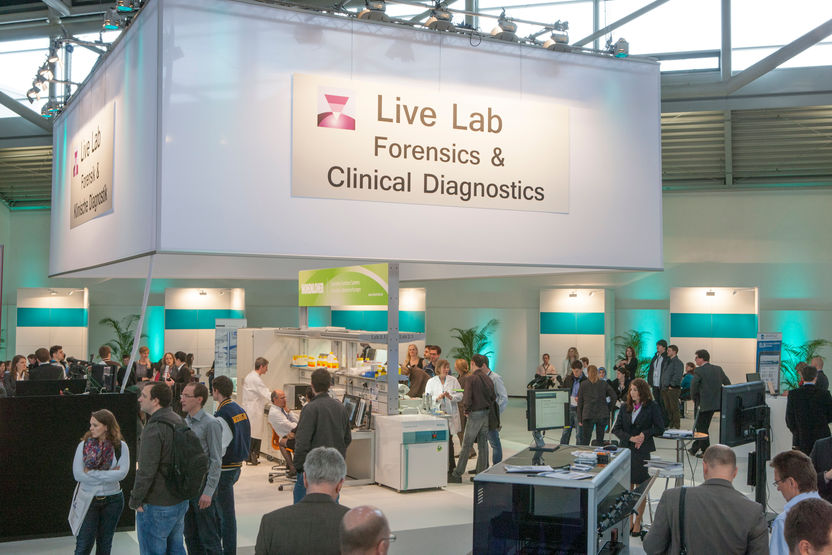Zebrafish -- the stars of biomedicine
Many findings can be transferred to humans
Zebrafish share most organ systems with humans. This makes them ideal model organisms to study the causes of human diseases like cancer or heart diseases. For this purpose, research needs a variety of zebrafish lines. With the European Zebrafish Resource Center (EZRC), Karlsruhe Institute of Technology (KIT) is now opening the first central repository for such lines in Europe. The EZRC is funded jointly by the Biointerfaces programme of the Helmholtz Association and the Klaus Tschira Foundation. The Klaus Tschira foundation provides a funding of 1.5 Million Euro over three years.

Zebrafish are considered ideal model organisms for biomedical research.
Martin Lober
"Zebrafish are robust, small, and reproduce quickly. Being vertebrates, they share most major organ systems with humans. This makes them ideally suited for biomedical research," explains Professor Uwe Strähle, Head of the Institute of Toxicology and Genetics (ITG) that operates the Zebrafish Resource Center on KIT's Campus North. "Zebrafish repair a spinal cord lesion, heart or kidney diseases or a damaged optic nerve all on their own. Their organ function is restored completely."
Moreover, their eggs are transparent and develop outside of the body of the mother. This allows researchers to observe the development of organs or even individual cells in the embryo as well as in the larva, which is also transparent, without harming adult animals. Such experiments may replace numerous animal experiments with rats or mice. The fish are ideally suited to studying the causes of cancer, heart disease, and behavioral disorders and to evaluating potential drugs. In recent years, laboratories in Europe alone have generated thousands of zebrafish lines, each of which carries either a particular mutation that can serve as a model for human disease, or a fluorescent marker that labels a particular tissue. However, European researchers have been lacking a central repository to store and distribute these fish. The European Zebrafish Resource Center will meet this need in the future. The EZRC has over 3,000 aquaria for keeping live fish as well as freezers capable of holding about 80,000 sperm samples. The EZRC will also be the first zebrafish screening center worldwide, welcoming guest researchers who will perform systematic research on its collection. The scientists will be provided with technologies such as high-throughput synthesis of drug candidates, genome sequencing, and robotics and software developed in-house for sample handling, microscopy, and image analysis. The EZRC will also be the central hub of ZF-HEALTH, a recently started collaborative project funded by the European Commission's 7th Framework Programme.
Other news from the department science

Get the life science industry in your inbox
By submitting this form you agree that LUMITOS AG will send you the newsletter(s) selected above by email. Your data will not be passed on to third parties. Your data will be stored and processed in accordance with our data protection regulations. LUMITOS may contact you by email for the purpose of advertising or market and opinion surveys. You can revoke your consent at any time without giving reasons to LUMITOS AG, Ernst-Augustin-Str. 2, 12489 Berlin, Germany or by e-mail at revoke@lumitos.com with effect for the future. In addition, each email contains a link to unsubscribe from the corresponding newsletter.
More news from our other portals
Last viewed contents
Bone degradation process within metastatic breast cancer identified
New technique multiplies life span in simple organisms

Final report analytica 2012: Decision-makers announce definite intentions to invest - Live Labs generate a great deal of interest
Category:Medical_Council_of_India
Juvenile_idiopathic_arthritis
Woolly_hair_syndrome
Nomad Bioscience: new plant biotechnology company founded to focus on biomaterials and biopharmaceuticals
Usher_syndrome
Jawaharlal_Institute_of_Postgraduate_Medical_Education_&_Research
Phenytoin
Waardenburg_syndrome



















































